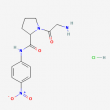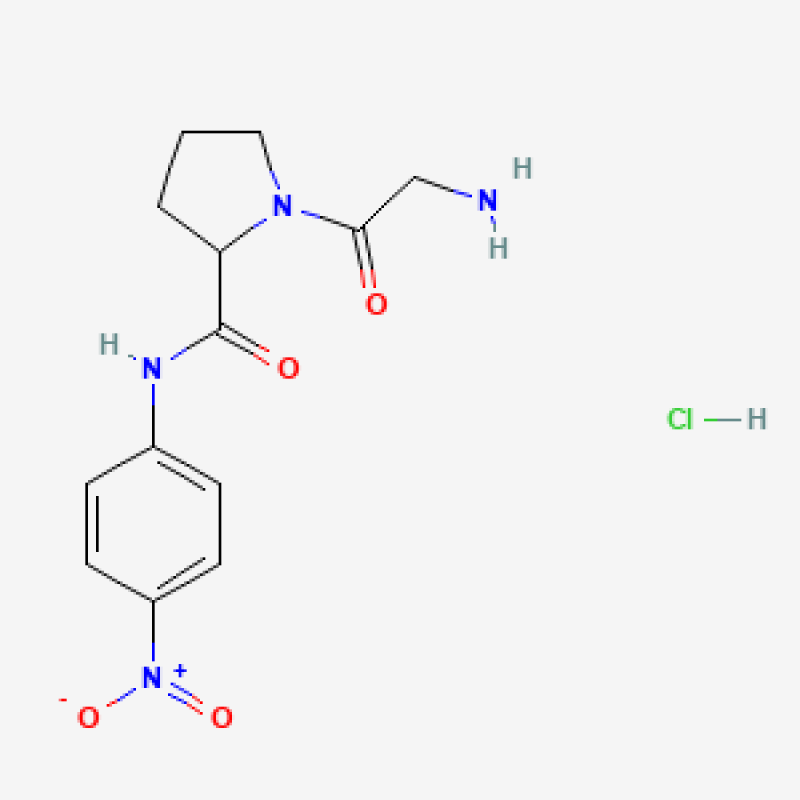
GP-pNA, Chromogenic Substrate - 100mg
Short description
GP-pNA, Chromogenic Substrate
Discover the power of GP-pNA, a versatile chromogenic substrate that unlocks new possibilities in your glycoscience research. This high-purity (≥97%) compound, with a molecular weight of 328.7515g/mol, offers a unique blend of reactivity and selectivity. Crafted with precision, GP-pNA's clear solid form and InChI key VBBFIBMVFSUUBP-MERQFXBCSA-N provide a reliable foundation for your experiments. However, handle with care as it may cause skin irritation, eye irritation, and respiratory discomfort. Always store in a cool, well-ventilated area, keeping the container tightly sealed. Embrace the potential of this exceptional chromogenic substrate and elevate your research to new heights.
- CAS: 103213-34-9
- Ref #: AN-AG007HUG
- Purity: ≥97%
- Formula: C13H17ClN4O4
- Color/Form: Solid
-
Procurenet Team Tshim Sha Tsui
Hong Kong 3 years
Description
GP-pNA, Chromogenic Substrate
Unlock the power of precision with GP-pNA, a meticulously crafted chromogenic substrate that empowers researchers and scientists across diverse fields. This remarkable compound, identified by the CAS number 103213-34-9, is a testament to the relentless pursuit of excellence in chemical synthesis.
At the heart of GP-pNA lies a harmonious blend of chemical properties, designed to elevate the standards of scientific inquiry. With a purity of ≥97%, this compound ensures reliable and reproducible results, making it an indispensable tool in the hands of discerning researchers. Its molecular formula, C13H17ClN4O4, and a molecular weight of 328.7515 g/mol, provide a unique chemical signature that can be seamlessly integrated into a wide range of applications.
Unraveling the Versatility of GP-pNA
GP-pNA, the Chromogenic Substrate, is a versatile powerhouse that transcends the boundaries of traditional research. Its diverse applications span across the realms of Glycoscience, where it serves as a crucial reagent in the exploration of carbohydrate-based systems and their intricate interactions.
In the field of pharmaceutical development, GP-pNA shines as a valuable asset in the synthesis of novel drug candidates. Its unique chemical structure and reactivity allow researchers to unlock new avenues for targeted therapies, addressing a wide range of health conditions. The compound's potential extends beyond the pharmaceutical domain, as it also finds applications in the agrochemical industry, contributing to the development of advanced crop protection agents.
Navigating the Complexities with Ease
Handling GP-pNA requires a meticulous approach, as the compound is classified with several hazard statements, including H302, H315, H319, and H335. These designations underscore the need for appropriate safety measures, such as wearing protective gloves, clothing, eye protection, and ensuring proper ventilation during use.
To maintain the integrity and stability of GP-pNA, it is recommended to store the compound in a cool, well-ventilated area, with the container tightly closed. Following these guidelines will ensure the longevity and consistent performance of this valuable chemical asset.
Unlocking the Potential: Comprehensive Resources
Dive deeper into the world of GP-pNA with the wealth of information available at your fingertips. Explore the compound's InChI code, MFCD00058170, and its unique InChIKey, VBBFIBMVFSUUBP-MERQFXBCSA-N, to uncover the intricate details that define its chemical identity.
Delve into the technical specifications, including the compound's color, form, and other physical properties, to fully understand its potential applications. Leverage the available resources, such as safety data sheets and scientific literature, to navigate the complexities of GP-pNA with confidence and unlock new possibilities in your research endeavors.
- CAS: 103213-34-9
- Ref #: AN-AG007HUG
- MDL: MFCD00058170
- InChI: InChI=1S/C13H16N4O4.ClH/c14-8-12(18)16-7-1-2-11(16)13(19)15-9-3-5-10(6-4-9)17(20)21;/h3-6,11H,1-2,7-8,14H2,(H,15,19);1H/t11-;/m0./s1
- InChIKey: VBBFIBMVFSUUBP-MERQFXBCSA-N
- Purity: ≥97%
- Formula: C13H17ClN4O4
- Molecular Weight: 328.7515
- Color/Form: Solid
Specifications
- Color form: Solid
- Formula: C13H17ClN4O4
- H statements: H302:Harmful if swallowed.H315:Causes skin irritation.H319:Causes serious eye irritation.H335:May cause respiratory irritation.
- Inchi: InChI=1S/C13H16N4O4.ClH/c14-8-12(18)16-7-1-2-11(16)13(19)15-9-3-5-10(6-4-9)17(20)21;/h3-6,11H,1-2,7-8,14H2,(H,15,19);1H/t11-;/m0./s1
- Inchi key: VBBFIBMVFSUUBP-MERQFXBCSA-N
- Mdl: MFCD00058170
- Molecular weight: 328.7515
- Notes: Complexity : 415.Compound Is Canonicalized : Yes.Covalently-Bonded Unit Count : 2.Defined Atom Stereocenter Count : 1.Defined Bond Stereocenter Count : 0.Exact Mass : 328.094g/mol.Formal Charge : 0.Heavy Atom Count : 22.Hydrogen Bond Acceptor Count : 5.Hy
- P statements: P280:Wear protective gloves/protective clothing/eye protection/face protection.P305+P351+P338:IF IN EYES:Rinse cautiously with water for several minutes.Remove contact lenses if present and easy to do. Continue rinsing.
- Purity: ≥97%





